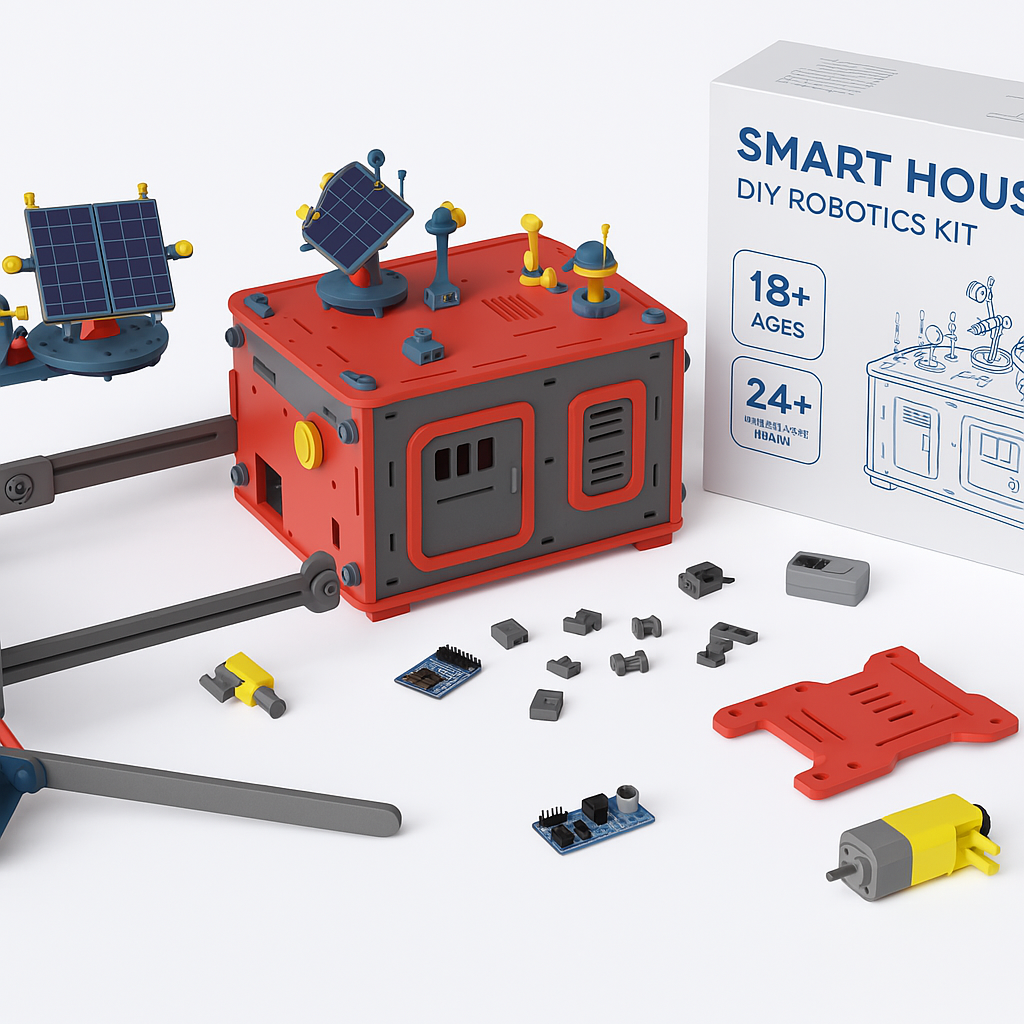Smart Home and IoT Automation Lab
In this hands-on lesson, students design and build a prototype of a smart home system. They integrate sensors, Wi-Fi modules, and control logic to create an environment that is intelligent, responsive, and energy-efficient. The project mimics modern smart homes that support features like motion-triggered lighting, remote monitoring, and voice-controlled appliances.
Through this lab, students explore the growing field of home automation and IoT integration, focusing on real-world applications in security, comfort, and energy savings.
Key Concepts Covered
- AI-assisted home automation and real-time control
- Environmental monitoring and adaptive comfort systems
- Security systems and remote access features
- Voice control and gesture-based user interfaces
- IoT networking protocols (e.g., MQTT, HTTP)
Components Used
| Component | Purpose |
|---|---|
| PIR Motion Sensor + Reed Switch | Detect motion and door status (security monitoring) |
| DHT11 / DHT22 | Monitor temperature and humidity for climate control |
| Relay Modules | Switch lights, fans, heaters, and other appliances |
| IR Sensors + RF Modules | Control legacy appliances wirelessly |
| ESP8266 (NodeMCU) | Act as Wi-Fi enabled smart hub for data/control |
| Google Assistant / Alexa via IFTTT | Enable voice commands for lights, fans, etc. |
| OLED Display | Display status information locally |
| Web Dashboard (Blynk / Firebase) | Monitor and control the system remotely |
| Light-dependent Resistor (LDR) | Enable auto-lighting based on ambient daylight levels |
How It Works
- Sensors detect temperature, humidity, motion, and lighting conditions in the environment.
- The microcontroller processes sensor data and controls appliances (e.g., lights, fans) using relays.
- The system sends data to the cloud using Wi-Fi and displays live stats on a dashboard or OLED screen.
- Voice assistants (Google or Alexa) are connected through IFTTT for voice-based control of devices.
- Security features use motion and door sensors to simulate smart alerts or alarms.
This setup models an intelligent home where devices interact seamlessly and adapt to user needs.
Learning Outcomes
- Design a functional smart home system using IoT components
- Understand Wi-Fi communication protocols and IoT architecture
- Build and test home security and energy-saving systems
- Implement voice assistant integration using IFTTT
- Explore real-world applications of AI, automation, and human-centered design
Optional Extensions
- Use Google Firebase to log and visualize historical sensor data
- Add gesture control using an accelerometer or infrared input
- Implement automatic fan/AC control based on humidity thresholds
- Create custom mobile apps to replace third-party dashboards
